Maintaining a healthy diet is essential for overall well-being. However, it's equally important to listen to your body and understand its signals. Often, we confuse thirst with hunger, leading to overeating or poor hydration. bottlebottle 2in1 tumbler helps you when your body needs water or energy.
Pay Attention to Timing:
One of the easiest ways to distinguish thirst from hunger is to pay attention to the timing of your last meal. If you've recently eaten, and you're feeling the urge to snack again, it might be your body's way of saying it's thirsty. In this case, reach for a glass of water instead of a snack.
The 20-Minute Rule:
Sometimes, it takes a little time for your body to signal whether it needs food or water. If you're unsure, follow the 20-minute rule. When you feel hungry, drink a glass of water and wait for 20 minutes. If you still feel hungry after that, it's more likely a sign that your body needs food. You could keep some snacks in the lower of 2in1 tumbler.
Recognize Dehydration Signs:
Dehydration can often be mistaken for hunger. Look out for these signs of dehydration:
a. Dry mouth and throat.
b. Dark yellow urine.
c. Feeling tired or dizzy.
d. Headaches.
e. Dry skin.
If you experience any of these symptoms, your body is likely in need of water, not food. Use the upper of 2in1 bottle to pick up water for hydration. Emotional vs. Physical Hunger:
Emotional vs. Physical Hunger:
Emotional eating is a common phenomenon where we eat not because we're physically hungry but because of stress, boredom, or other emotional triggers. If you find yourself reaching for food when you're not truly hungry, try engaging in a different activity or addressing the underlying emotional issue. It might not be your body's need for food but rather a need for emotional comfort.
Mindful Eating:
Practice mindful eating by paying close attention to your body's cues. Before you eat, take a moment to ask yourself if you are genuinely hungry. Think about the last time you had water and whether you might be thirsty instead. This simple self-assessment can help you make more informed choices.
Balanced Meals:
Ensure that your meals are well-balanced with a combination of macronutrients, such as carbohydrates, protein, and healthy fats. A balanced meal will keep you satisfied for longer, reducing the chances of mistaking thirst for hunger.
Keep Hydration in Check:
To maintain good hydration, aim to drink at least 8 cups (64 ounces) of water per day. The exact amount can vary depending on factors like age, activity level, and climate. Additionally, remember that foods like fruits and vegetables also contribute to your daily fluid intake.
Stay Prepared:
Carry a bottlebottle 2in1 tumbler with you, so you're always ready to quench your thirst or solve your hunger. Properly identifying whether your body needs water or energy is a valuable skill in maintaining a healthy diet and overall well-being. By following these simple guidelines and learning to listen to your body's signals, you can make better choices about what to eat and drink. Remember, it's not just about what you eat, but also about understanding what your body truly needs. So, the next time you're unsure, take a moment to tune in and ask yourself, "Am I thirsty or hungry?" Your body will thank you for it.
Properly identifying whether your body needs water or energy is a valuable skill in maintaining a healthy diet and overall well-being. By following these simple guidelines and learning to listen to your body's signals, you can make better choices about what to eat and drink. Remember, it's not just about what you eat, but also about understanding what your body truly needs. So, the next time you're unsure, take a moment to tune in and ask yourself, "Am I thirsty or hungry?" Your body will thank you for it.
Pay Attention to Timing:
One of the easiest ways to distinguish thirst from hunger is to pay attention to the timing of your last meal. If you've recently eaten, and you're feeling the urge to snack again, it might be your body's way of saying it's thirsty. In this case, reach for a glass of water instead of a snack.
The 20-Minute Rule:
Sometimes, it takes a little time for your body to signal whether it needs food or water. If you're unsure, follow the 20-minute rule. When you feel hungry, drink a glass of water and wait for 20 minutes. If you still feel hungry after that, it's more likely a sign that your body needs food. You could keep some snacks in the lower of 2in1 tumbler.
Recognize Dehydration Signs:
Dehydration can often be mistaken for hunger. Look out for these signs of dehydration:
a. Dry mouth and throat.
b. Dark yellow urine.
c. Feeling tired or dizzy.
d. Headaches.
e. Dry skin.
If you experience any of these symptoms, your body is likely in need of water, not food. Use the upper of 2in1 bottle to pick up water for hydration.

Emotional eating is a common phenomenon where we eat not because we're physically hungry but because of stress, boredom, or other emotional triggers. If you find yourself reaching for food when you're not truly hungry, try engaging in a different activity or addressing the underlying emotional issue. It might not be your body's need for food but rather a need for emotional comfort.
Mindful Eating:
Practice mindful eating by paying close attention to your body's cues. Before you eat, take a moment to ask yourself if you are genuinely hungry. Think about the last time you had water and whether you might be thirsty instead. This simple self-assessment can help you make more informed choices.
Balanced Meals:
Ensure that your meals are well-balanced with a combination of macronutrients, such as carbohydrates, protein, and healthy fats. A balanced meal will keep you satisfied for longer, reducing the chances of mistaking thirst for hunger.
Keep Hydration in Check:
To maintain good hydration, aim to drink at least 8 cups (64 ounces) of water per day. The exact amount can vary depending on factors like age, activity level, and climate. Additionally, remember that foods like fruits and vegetables also contribute to your daily fluid intake.
Stay Prepared:
Carry a bottlebottle 2in1 tumbler with you, so you're always ready to quench your thirst or solve your hunger.




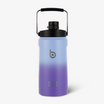
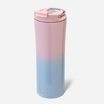
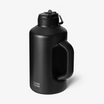
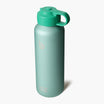
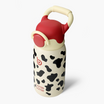
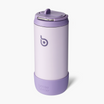




Leave a comment
This site is protected by hCaptcha and the hCaptcha Privacy Policy and Terms of Service apply.